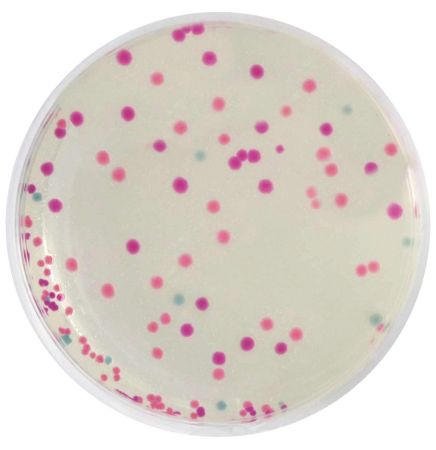Rainbow Transformation
£136.76
£113.97
In this colourful experiment, students will explore the biological process of bacterial transformation using vibrant chromogenic proteins.
Pack Size:
1
In stock
 Chilled
Chilled
In this colourful experiment, students will explore the biological process of bacterial transformation using vibrant chromogenic proteins. Students will use three recombinant plasmids to transform E.coli bacteria. The resulting E.coli will be examined for the presence of blue, purple, and pink pigments, as well as for resistance to ampicillin. Features new enhanced transformation protocol for improved student results.
• Explore genetic engineering and the central dogma with this colourful experiment
• Transform E.coli with plasmids that contain a gene for ampicillin resistance and a gene for either a blue, purple, or pink pigment
• Select for transformed cells using LB-ampicillin plates and calculate transformation efficiency
• Expose transformed cells to IPTG to demonstrate differential gene expression
• Different plasmids help emphasize the concept of DNA>RNA>Protein>Trait
For 10 lab groups
Time Required:
Set up and plating - 50 minutes / Incubation - overnight / Transformation efficiency - 15 minutes
Kit Includes: Instructions, BactoBeads™, plasmid DNA, IPTG, ampicillin, transformation solution, ReadyPour™ Luria broth agar, sterile, recovery broth, petri plates, sterile pipets, loops and microtubes.
All You Need: Adjustable volume micropipette (5-50 µl and 50-200 µl recommended) and tips, two water baths (37˚C and 42˚C), thermometer, incubation oven (37˚C), centrifuge, pipette pumps or bulbs, ice and ice bucket, marking pens, Bunsen burner, hot plate or microwave oven, and hot gloves.
Storage: Some components require refrigerator and freezer storage.
• Explore genetic engineering and the central dogma with this colourful experiment
• Transform E.coli with plasmids that contain a gene for ampicillin resistance and a gene for either a blue, purple, or pink pigment
• Select for transformed cells using LB-ampicillin plates and calculate transformation efficiency
• Expose transformed cells to IPTG to demonstrate differential gene expression
• Different plasmids help emphasize the concept of DNA>RNA>Protein>Trait
For 10 lab groups
Time Required:
Set up and plating - 50 minutes / Incubation - overnight / Transformation efficiency - 15 minutes
Kit Includes: Instructions, BactoBeads™, plasmid DNA, IPTG, ampicillin, transformation solution, ReadyPour™ Luria broth agar, sterile, recovery broth, petri plates, sterile pipets, loops and microtubes.
All You Need: Adjustable volume micropipette (5-50 µl and 50-200 µl recommended) and tips, two water baths (37˚C and 42˚C), thermometer, incubation oven (37˚C), centrifuge, pipette pumps or bulbs, ice and ice bucket, marking pens, Bunsen burner, hot plate or microwave oven, and hot gloves.
Storage: Some components require refrigerator and freezer storage.
| Pack Size | 1 |
|---|---|
| Gross Weight | 1.32 |
Write Your Own Review







